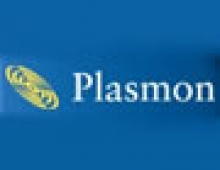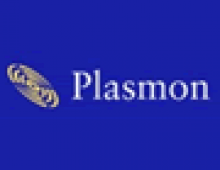Plasmon UDO30D-SE
1. Introduction
 While there has been a lot of talk over the past year or so about the next generation of optical disc storage formats, with the Blue-ray and HD-DVD camps battling it out to see who will prevail, one company has been actively using the technology to provide reliable, professional archival storage solutions. That company is Plasmon.
While there has been a lot of talk over the past year or so about the next generation of optical disc storage formats, with the Blue-ray and HD-DVD camps battling it out to see who will prevail, one company has been actively using the technology to provide reliable, professional archival storage solutions. That company is Plasmon.
Founded in 1984, Plasmon is a pioneer in optical storage technology and has emerged as a leader in the archival storage industry. Plasmon develops and manufactures UDO (Ultra Density Optical) professional 5.25 inch optical drives and media, specifically designed to meet the secure archival storage demands of among others, corporations and government agencies. The media longevity and data authenticity of the blue laser UDO technology makes it ideally suited for environments subject to regulations on data retention and the legal admissibility of electronic records.
UDO Technological Background
 Plasmon`s UDO drive was one of the first blue-violet laser and phase change products available on the market, offering the next generation of professional optical storage devices. UDO uses non contact recording to provide robust and reliable performance. Blu-Ray and PDD (Professional Disc for DATA from SONY) lasers use a numerical aperture (NA) of 0.85, while UDO lens has 0.7 NA for higher reliability and a 0.1 mm cover layer for disc protection. The opto-mechanical assembly for the UDO drive comes from Asahi Pentax, a leading manufacturer of opto-mechanical assemblies for 5.25" opto-mechanical drives.
Plasmon`s UDO drive was one of the first blue-violet laser and phase change products available on the market, offering the next generation of professional optical storage devices. UDO uses non contact recording to provide robust and reliable performance. Blu-Ray and PDD (Professional Disc for DATA from SONY) lasers use a numerical aperture (NA) of 0.85, while UDO lens has 0.7 NA for higher reliability and a 0.1 mm cover layer for disc protection. The opto-mechanical assembly for the UDO drive comes from Asahi Pentax, a leading manufacturer of opto-mechanical assemblies for 5.25" opto-mechanical drives.

The blue laser recording technology of UDO also achieves far greater data densities, resulting in dramatically higher media capacities. First generation UDO media has a capacity of 30GB, with a roadmap extending to 60GB and 120GB in future generations. UDO delivers all the traditional strengths expected from optical storage such as record authenticity and media longevity, but at a much higher capacity and lower cost than previous generation products. Plasmon's Archival Storage Total Cost of Ownership Analysis provides a detailed explanation and quantifies the acquisition and operating costs of different storage technologies used for archiving data, including UDO.
UDO media is available in Write Once (True Write Once and Compliant Write Once) and Rewritable media formats. Each of the three media types has its own physical and operational properties making it well suited for different service levels within an overall archive strategy. Since UDO drives and Plasmon optical libraries support all media types, organizations can match the media format with the specific demands of each document class.
Plasmon UDO Products
Plasmon provides a series of products using the UDO technology, ranging in scale from archival storage strategies for corporations, down to small office environments.
The G-Series libraries are used in archive applications that include, Electronic Content Management (ECM), Document Imaging, Hierarchical Storage Management (HSM), and Information Lifecycle Management (ILM). They are the backbone of the archival storage strategy for corporations and government agencies worldwide. There is also a G-Series for the IBM OS/400, which is supported natively within the IBM OS/400 and i5/OS operating systems. These libraries are automatically identified by OS/400 and i5/OS, presenting the library as a standard storage device.
At the other end of the scale, there are the UDO internal and desktop drives. The Desktop Drive brings professional archival storage to small office and departmental environments at an affordable price. There is also the option of future expansion to G-Series library configurations when archive capacity grows.
Why would someone need UDO Technology?
According to Plasmon, archival storage solutions are important for all organizations, large and small, everywhere round the world. The following changes in business practices and government oversight make an archival storage strategy essential:
-
Regulation – government and industry agencies have increased enforcement of existing regulations controlling data retention and instituted new, more stringent controls.
-
Litigation – the financial and management burden of litigation continues to grow. Providing authenticity and well-documented audit trails are crucial elements for protecting any organization.
-
Benefits – organizations are using long-term knowledge resources to make better decisions, lower costs, reduce time-to-market and improved customer loyalty.
Authenticity and Trustworthiness
UDO provides absolute data authenticity for regulatory compliance or for any application where archived information must remain 100% unchanged. UDO’s patented Phase Change recording process permanently alters the molecular structure of true Write Once media, ensuring data integrity at the most fundamental level.
Long-term Data Retention
UDO has been designed to provide decades of dependable data retention. A highly stable recording surface delivers media life in excess of 50 years, minimizing the frequency of data migration and virtually eliminating media maintenance.
High Capacity and Scalability
Rapidly growing archive data volumes demand solutions with high initial capacity and flexibility to scale over time. Blue laser technology gives 30GB UDO a three-fold increase in storage capacity compared to previous generation MO (Magneto Optical) and DVD technologies. The removability of UDO cartridges, combined with the on-line media management capabilities of optical storage libraries, means scalability is essentially unlimited.
Rapid Information Access
Knowledge assets are useless if they cannot be accessed when needed. UDO has fast 25-millisecond random access capability, facilitating timely retrieval of relevant data.
Low Total Cost of Ownership
UDO has a highly competitive archival storage TCO. With attractively priced 30GB media, the acquisition cost of a UDO library compares favorably with much less reliable tape or DVD solutions and costs a fraction of hard disk-based systems. UDO’s ISO standard 5.25 inch media cartridge, which permits the use of MO and UDO media in the same library, eliminating the necessity for migration from 9.1 MO media. Planned introductions of backward-compatible 60GB and 120GB UDO drives guarantee investment protection and minimize future migration expense. For a full analysis, read the article Archival Storage Total Cost of Ownership Analysis from Plasmon.
UDO Desktop Drive Specifications Summary
| Media Load Time | 5 sec typical |
| Media Unload Time | 3 sec typical |
| Average Seek Time | 28 msec |
| Drive Buffer | 32MB |
| Max Sustained Transfer Rate - Read | 8 MB/s |
| Max Sustained Transfer Rate - Write | 4 MB/s (with verification) |
| Max SCSI Transfer Rate | 40 MB/s |
| MSBF - Mean Swap Between Failure | 750,000 load/unload cycles |
| MTBF - Mean Time Between Failure | 100,000 hours |
| Interface | Wide Ultra 2 LVD SCSI |
- UDO Media
 As was stated earlier, UDO media is available in Write Once (True Write Once and Compliant Write Once) and Rewritable media formats. Rewritable UDO media is typically used in archive applications where the stability and longevity of optical media are important, but records change frequently and there is a need to delete and rewrite information. UDO Rewritable media is ideal for small office and departmental applications or in larger unstructured archives that are not subject to specific regulatory or corporate standards.
As was stated earlier, UDO media is available in Write Once (True Write Once and Compliant Write Once) and Rewritable media formats. Rewritable UDO media is typically used in archive applications where the stability and longevity of optical media are important, but records change frequently and there is a need to delete and rewrite information. UDO Rewritable media is ideal for small office and departmental applications or in larger unstructured archives that are not subject to specific regulatory or corporate standards.
True Write Once media offers the highest level of physical record authenticity and is ideal for document classes with very long or indefinite record retention periods. Common uses of True Write Once media include medical, financial, industrial and cultural applications that require documents be retained for years or decades and must be held to a very high standard of legal admissibility.
Compliant Write Once media combines longevity and secure authenticity of True Write Once UDO media with the ability to shred expired records for document classes that demand physical disposal. Designed specifically to assist organizations in meeting regulations on data retention and disposition while managing corporate risk, Compliant Write Once media can be used in a wide range of financial, administration and legal applications.
UDO media uses a patented and field-proven Phase Change recording technology that produces a very stable recording surface with a media life in excess of 50 years. Since it is a non-contact, non-magnetic recording process, data written on UDO media does not degrade with use, tolerates a wide range of temperature and humidity conditions and is insensitive to magnetic field exposure.
In order to protect UDO media from physical damage and contamination (dust, fingerprints, etc.), the disk is enclosed in a rugged ISO standard 5.25 inch cartridge. A unique double-shutter design prevents dust accumulation on the top surface of the media during recording. Lower dust contamination means more reliable read and write operations and extended media life.
UDO media has been certified by ISO, IEC and Ecma International. Plasmon manufactures UDO media in the United Kingdom and has granted a license to Mitsubishi Kagaku Media (MKM) for manufacturing second-source media in Japan. MKM's media products are sold under the Verbatim brand in North America, Europe and Asia and the Mitsubishi brand in Japan.
- Media Specifications
Disk
Diameter |
130 mm |
Disk
Thickness |
2.4 mm |
Cartridge
Size |
5.25 inch - ISO Standard
135x153x11mm |
Capacity |
30 GB |
Sector size |
8 KB |
Number of
user sectors/side |
1,838,652 |
Data area |
27.0-62.5 mm |
Recording
layer |
Phase change |
Recording
format |
Land & Groove |
Recording
side |
Both sides |
Recording
density |
7.4 Gb/in |
Media
layers |
1 |
Data encoding |
RLL (1,7) |
Rewrite cycles
(Rewritable Media) |
10,000 |
Media life |
50+ years |
Archival
Temperature |
5-55C |
Archival
relative humidity |
3-90% |
UDO
MEDIA
|
Generation
1
|
Generation
2
|
Generation
3
|
Capacity
|
30
GB
|
60
GB
|
120
GB
|
Transfer
Rate
|
up
to 8 MB/s
|
up
to 12 MB/s
|
up
to 18 MB/s
|
RPM
|
2000
RPM
|
3000
RPM
|
3600
RPM
|
Avg
Seek Time
|
25
msec
|
25
msec
|
25
msec
|
Numerical
Aperture
|
0,7
|
0,7
|
0,85
|
Media
Layers
|
1
|
2
|
2
|
Encoding
|
1,7
|
1,7
|
ML
|
Sector
Size
|
8
KB
|
8
KB
|
8
KB
|
SCSI
Transfer Rate
|
80
MB/s
|
80
MB/s
|
80
MB/s
|
Load
Time
|
5
sec
|
5
sec
|
5
sec
|
Unload
Time
|
3
sec
|
3
sec
|
3
sec
|
MSBF
|
750,000
|
750,000
|
750,000
|


















